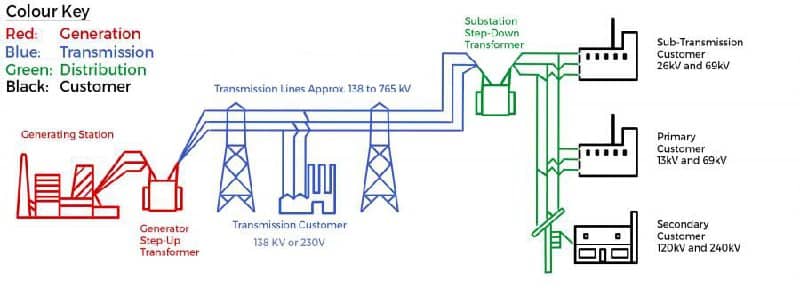Introduction
A Run-of-the-River Hydroelectric power station generates electricity from a flowing river. This type of power station belongs to the renewable energy group and has an operating efficiency far higher than other renewables such as wind and solar power. Run-of-the-river power stations utilize Kaplan or Francis turbines.
How Run-of-the-River Power Plants Work
Water from the river is diverted by a dike to the power station penstock. The water then passes through a turbine runner and the runner begins to rotate. A generator is connected to the runner on a common shaft and electricity is generated as the generator rotor rotates within the stator.
Electricity is then fed through switchgear to an electrical transformer where the voltage is increased. Increasing the voltage reduces electrical losses that would be incurred during transmission and also allows the distribution cables to have a smaller diameter. After the transformer, current is fed to the open air switchyard and into the national grid.

Electrical Grid Distribution
Enjoying this article? Then be sure to check out our Hydroelectric Power Plants Video Course! The course has a quiz, handbook, and you will receive a certificate when you finish the course. Enjoy!
3D Model Components
This 3D model shows all major components associated with a typical run of the river power station, these include:
- Dike
- Penstock
- Trash/Rubbish Grate
- Isolating Valves
- Switchgear
- Turbine Runner (Francis)
- Spiral/Volute Casing
- Draft Tube
- Generator
- Electrical Transformer
- Open Air Switchyard
Related Online Engineering Courses
Introduction to Hydroelectric Power Plants
Hydroelectric Power Plants Overview
Additional Resources
https://energyeducation.ca/encyclopedia/Run-of-the-river_hydroelectricity
https://en.wikipedia.org/wiki/Run-of-the-river_hydroelectricity
https://afry.com/en/competence/run-river-power-plants
